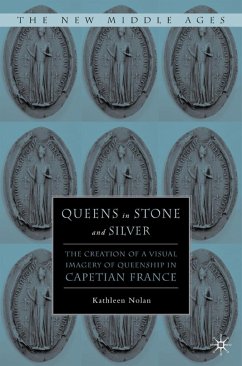"[This book] should be required for art historians interested in women s patronage and their self-expression and self-definition through their commissions and for historians who work on queens." - Speculum
"Nolan has discovered compelling connections between the representations of living queens on their seals, and of dead queens on their tombs. She goes beyond recent quibbling over patronage and portraits, to argue a broader significance for these seals and tomb effigies in relation to the reputation and artistic control of several royal women. Though the objects of her study are visual works, she builds upon and complements the recent work of historians, and scholars of literature. In a framework of current gender studies and feminist theory, she uses these case studies to re-examine modern views of the ways women s authority is manifested in cultural production." - Madeline H. Caviness, Mary Richardson Professor Emeritus of Art and Art History, Tufts University
"This path-finding work is essential reading for anyone interested in Gothic art and architecture. With so many of her queens of stone and silver now destroyed, Nolan takes an active voice in guiding the reader through historical documentation, related monuments, and modern scholarship to understand these important works of female agency. Thoughtful and innovative, Nolan s approach allows these self-portrayals to emerge as dynamic entities, dramatically changing our perspective of Gothic art inthe bargain." - Mary B. Shepard, Friends University
"Nolan has discovered compelling connections between the representations of living queens on their seals, and of dead queens on their tombs. She goes beyond recent quibbling over patronage and portraits, to argue a broader significance for these seals and tomb effigies in relation to the reputation and artistic control of several royal women. Though the objects of her study are visual works, she builds upon and complements the recent work of historians, and scholars of literature. In a framework of current gender studies and feminist theory, she uses these case studies to re-examine modern views of the ways women s authority is manifested in cultural production." - Madeline H. Caviness, Mary Richardson Professor Emeritus of Art and Art History, Tufts University
"This path-finding work is essential reading for anyone interested in Gothic art and architecture. With so many of her queens of stone and silver now destroyed, Nolan takes an active voice in guiding the reader through historical documentation, related monuments, and modern scholarship to understand these important works of female agency. Thoughtful and innovative, Nolan s approach allows these self-portrayals to emerge as dynamic entities, dramatically changing our perspective of Gothic art inthe bargain." - Mary B. Shepard, Friends University








